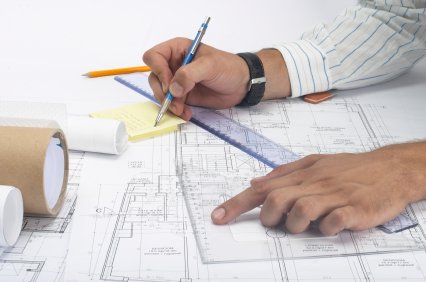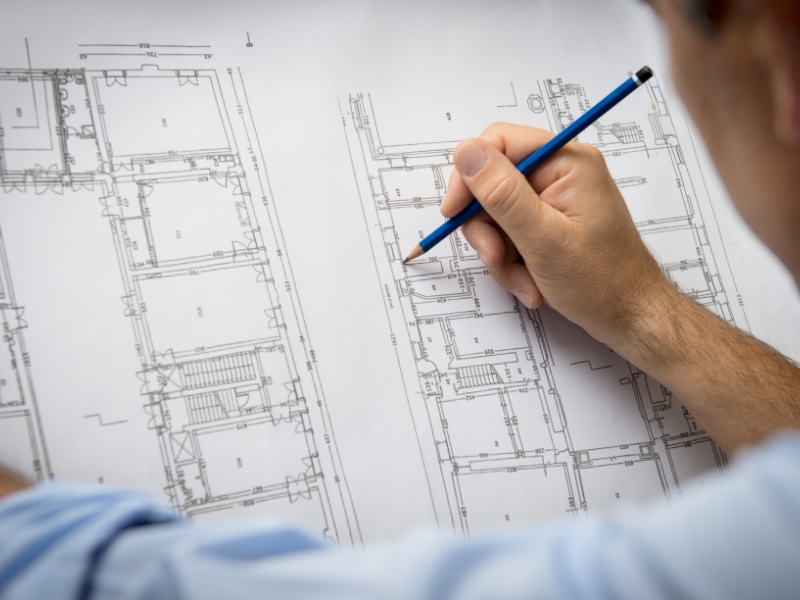Architect Rules for Designing Timeless Interiors
Architect Rules for Designing Timeless Interiors
Blog Article
Recognizing the Diverse Occupation Paths Available for Aspiring Architect
As a hopeful Architect, you have a world of job courses awaiting you. Each path uses distinct challenges and opportunities to use your imagination and technical knowledge. Whether you're attracted to traditional style or the subtleties of lasting design, there's a particular niche that lines up with your interests. Understanding these diverse options can form your specialist trip, but which instructions will you select to explore first?
Conventional Design: Creating Buildings and Structures
Typical design concentrates on developing structures and frameworks that blend functionality with visual allure. Your designs can show social heritage, showcasing regional customs while satisfying modern-day requirements.
You'll establish skills in preparing, model-making, and website evaluation, enabling you to imagine and communicate your concepts effectively. Engaging with clients, you'll require to understand their vision and equate it right into feasible designs.
Moreover, constructing codes and sustainability practices are essential in your job, guaranteeing your frameworks are environmentally pleasant and secure. As you expand in your job, you'll discover opportunities in residential, business, or also reconstruction tasks, each offering one-of-a-kind difficulties. Welcoming conventional design leads the way for a fulfilling occupation that admires the past while forming the future.
Urban Planning: Forming Areas and Public Spaces
As an aspiring Architect, you can play a vital duty as an urban coordinator, changing exactly how areas operate and connect. By employing area interaction approaches, you'll assure that homeowners have a voice fit their setting. And also, incorporating sustainable design principles will certainly help create rooms that not just satisfy today's requirements yet also secure the future.
Duty of Urban Planners
While numerous could believe of architects as the single dreamers behind structures, city coordinators play a crucial function in forming the wider landscape of neighborhoods and public spaces. By working together with different stakeholders, you'll help make parks, transportation systems, and domestic areas that advertise social communication and access. Your proficiency in spatial style and neighborhood characteristics permits you to envision future development while preserving social heritage.
Neighborhood Involvement Approaches
Effective area involvement techniques are crucial for city coordinators to guarantee that the voices of citizens are heard and valued in the preparation process. To promote meaningful dialogue, you should focus on open online forums and workshops where neighborhood participants can express their concepts and concerns. By proactively listening and incorporating feedback, you'll produce areas that show the community's demands, inevitably leading to even more lasting and effective metropolitan settings.
Lasting Layout Concepts
When making metropolitan spaces, integrating sustainable style principles is important for producing settings that thrive both environmentally and socially. Think about incorporating eco-friendly rooms, like yards and parks, to boost biodiversity and improve air quality.
Creating with water conservation in mind is also key-- consider rainfall yards and absorptive surfaces to take care of stormwater. Including area members throughout the planning process assurances that the spaces you create satisfy their needs and motivate social communication. By welcoming these concepts, you'll add to vivid, lasting urban landscapes that benefit everyone.

Landscape Design: Developing Lasting Outside Atmospheres
As you explore landscape design, you'll find vital design principles that create stunning and useful exterior spaces. Lasting practices play a vital role in ensuring these environments grow while lessening environmental impact. And also, you'll find a range of career possibilities that enable you to make a real distinction in how individuals communicate with nature.
Layout Principles in Landscape
Recognizing style principles in landscape architecture is vital for developing lasting exterior environments that integrate with nature. You'll require to ponder aspects like balance, scale, and proportion to ensure your layouts really feel cohesive and welcoming. Additionally, pay focus to seasonal modifications, developing with materials that complement the environments year-round.
Sustainable Practices Overview
Sustainable methods in landscape design not only focus on visual appeals however also focus on ecological health and wellness and resource preservation. You can develop rooms that promote soil wellness, such as exercising and using organic materials permaculture concepts. Ultimately, these techniques assure your layouts profit both people and the atmosphere for years to come.
Occupation Opportunities Exploration
With a solid structure in sustainable practices, landscape style provides a selection of career courses that permit you to make a meaningful influence on the environment. You could work as a landscape developer, creating visually pleasing and practical outdoor find out here now rooms, or focus on environmental restoration, helping to revive broken communities. Urban coordinators usually collaborate with landscape architects to produce environment-friendly areas in city settings, enhancing city livability. If you're enthusiastic concerning education and learning, consider becoming a landscape style teacher, motivating future generations. In addition, you could function with nonprofits focused on ecological sustainability or take part in research to introduce brand-new practices. Each course not only forms lovely environments but likewise promotes a much healthier planet for future generations.
Sustainable Design: Focusing on Eco-Friendly Practices
As you discover your profession in architecture, accepting green techniques can establish you apart in a competitive field. Sustainable design focuses on developing structures that minimize environmental effect while improving passenger well-being. By integrating sustainable materials, energy-efficient systems, and lasting structure methods, you'll add to a greener future.
Beginning by gaining knowledge of environment-friendly qualifications like LEED or BREEAM, which can bolster your qualifications. Take into consideration just how natural light, air flow, and thermal effectiveness can optimize design. Team up with designers and environmental experts to innovate solutions that decrease waste and save sources.
Don't neglect the relevance of community participation-- engaging local stakeholders can motivate styles that integrate with the environment. As customers significantly prioritize sustainability, your expertise in green practices will certainly not just draw in tasks however also fulfill your interest for responsible style. Embrace this important facet of the career, and enjoy your job prosper.
Historical Conservation: Securing and Bring Back Social Heritage
While you begin on your architectural trip, take into consideration the crucial function of historic conservation in preserving our social heritage. This field concentrates on the protection and repair of significant buildings, websites, and frameworks that tell the tales of our past. By participating in historical preservation, you'll aid safeguard the architectural legacy that shapes community identity.
As a historical preservation Architect, you'll analyze historical significance and evaluate the condition of frameworks. You'll function closely with chroniclers and preservationists to guarantee authentic restoration methods are utilized. This job course allows you to mix imagination with research, allowing you to design solutions that value initial materials and craftsmanship.
Your work not just adds to sustainability by recycling existing buildings but additionally cultivates a feeling of satisfaction within neighborhoods. Embracing this path will help you end up being a read this post here guardian of history, maintaining the stories and looks that improve our lives.
Inside Design: Enhancing Indoor Spaces
Historical preservation and indoor design both share a dedication to improving the developed setting, but they concentrate on various facets. While historical preservation emphasizes keeping a framework's cultural and historical value, interior design zeroes in on maximizing indoor areas for capability and aesthetics.
As an ambitious Architect, you'll locate that indoor design allows you to blend imagination with technical abilities. You'll create spaces that not just look great yet additionally advertise convenience and effectiveness. This area entails understanding just how light, color, and products communicate within a space, influencing state of mind and use.
You'll service different projects, from household homes to commercial workplaces, making sure that each setting fulfills the requirements of its occupants. By prioritizing user experience, you can transform insides right into useful and inspiring spaces, making a substantial influence on exactly how people communicate with their surroundings. Embrace the possibility to enhance indoor settings and shape the method individuals function and live.
Industrial Layout: Combining Capability With Looks
Industrial design plays a crucial role in creating products that effortlessly mix looks with capability, making certain that what you utilize everyday is not only aesthetically enticing however likewise sensible. As a hopeful Architect, you might engage yourself in this area, focusing on making every little thing from furniture to consumer electronics. Your work includes understanding individual needs, products, and making procedures, enabling you to create cutting-edge options that enhance Discover More everyday experiences.
In commercial design, you'll typically team up with designers, marketing professionals, and manufacturers, guaranteeing that your designs are not only stunning yet additionally feasible. You'll find out to balance type and feature, prioritizing functionality without compromising style. By refining your skills in mapping out, 3D modeling, and prototyping, you'll be well-appointed to bring your concepts to life. This career path supplies a dynamic atmosphere where creativity fulfills practicality, making it a fulfilling option for architects thinking about forming the items of tomorrow.
Frequently Asked Inquiries
What Educational Certifications Do I Need to Become a Designer?
To end up being an architect, you'll require an expert degree in architecture, normally a Bachelor's or Master's. In addition, you'll have to finish an internship and pass the Architect Enrollment Examination to exercise legally.
Exist Certification Needs for Different Architectural Career Paths?
Yes, there're qualification requirements for numerous building courses. Architect. You'll need to pass tests, full teaching fellowships, and sometimes go after specialized training, depending upon your selected emphasis, like landscape architecture, urban layout, or historical conservation
What Software Abilities Are Essential for Designers Today?

Exactly How Can I Gain Practical Experience While Researching Design?
You can get sensible experience by interning at architectural firms, getting involved in style competitions, offering for neighborhood jobs, or teaming up with classmates on real-world jobs. These chances enhance your abilities and build valuable connections in the market.
What Task Opportunities Exist Outdoors Standard Style Firms?
You can check out various job chances outside typical design companies, like urban planning, indoor style, landscape architecture, building and construction management, realty advancement, or also roles in sustainability consulting. Each offers one-of-a-kind challenges and incentives.
Whether you're attracted to conventional style or the subtleties of lasting style, there's a specific niche that aligns with your interests.When developing urban rooms, incorporating sustainable design concepts is essential for producing environments that prosper both environmentally and socially.As you check out landscape style, you'll uncover vital layout principles that produce attractive and practical exterior spaces.Understanding design principles in landscape design is important for creating lasting exterior atmospheres that integrate with nature.In industrial design, you'll commonly team up with online marketers, engineers, and producers, guaranteeing that your styles are not only stunning however additionally feasible.
Report this page